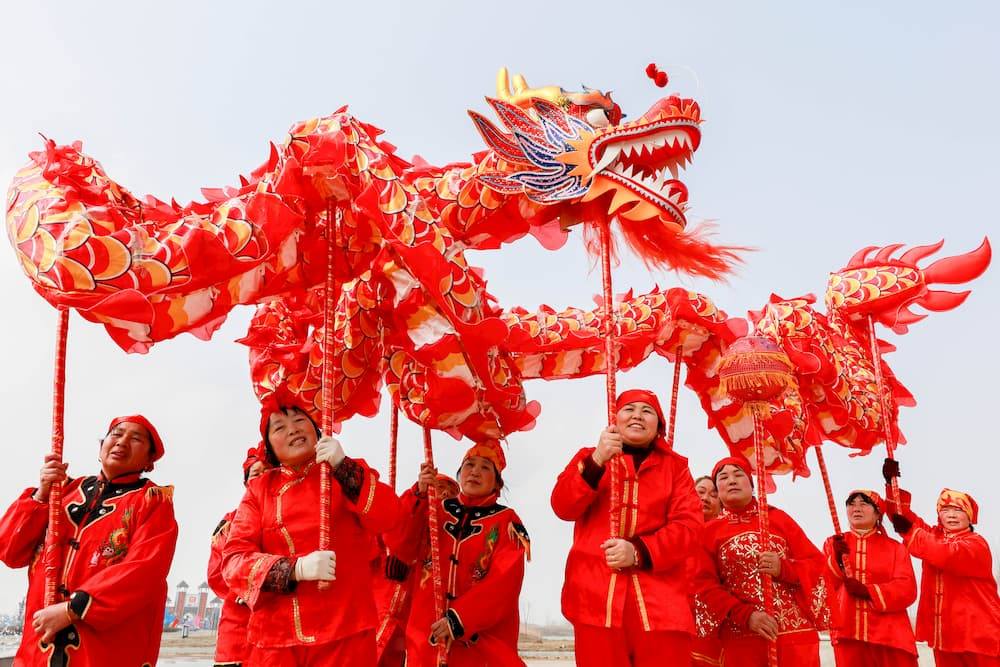
Chinese Festivals
Splendid
Chi Culture
Topic
Chinese Festivals
China is known for the varieties of its traditional festivals. According to the Tong sheng, an ancient Chinese almanac, there are at least nine major festivals, twenty-four solar periods, and one hundred forty celebrations in a year. Festivals commemorate seasonal, temporal, or phenological changes. They are social events rich with local customs that celebrate a particular theme or significant event. Festivals are inseparable from Chinese life and culture, and reflect the relationship between people and nature. Respect for harmonious relationships and caring for both the elderly and the young are on display in various festivals and customs.
Agriculture was the foundation of ancient China and the early rulers considered it vital. Two important celebrations developed from agricultural activities: the spring and winter festivals. For farmers who have always “relied on heaven to eat,” the first solar period (the beginning of spring) was considered a time of celebration. The Spring Festival is also known as the New Year. In Chinese the word nian (year) was synonymous with “harvest.” Since, for the most part, grain ripened just once a year, “harvest” was then gradually extended from being the name of an agricultural cycle to the name of the festival. The Spring Festival originated from the “hunting sacrifice” of early times. These celebrations brought people into the streets in vast numbers beginning on the twenty-third of the twelfth lunar month to the Lantern Festival on the fifteenth of the first month.
The concept of nian is closely related to the periodicity of astronomical and agricultural patterns in the past. In the repetition of spring planting, summer hoeing and weeding, autumn harvesting, and winter storing, people always have had reason to celebrate their harvest; in the course of time, it became the most important celebration of the year. The graph nian in oracle bone and bronze inscriptions, indeed, bears the meaning of fruitful harvests and ripened grain.
The winter solstice is also known as the Winter Festival. It has a few other names such as, changzhi (arrival of the longest night), duanzhi (arrival of the shortest day), and zhiri (advent day). These three words all share a common sound: zhi which means “to reach towards,” or “to stretch” towards the ultimate. Ancient society attached such importance to the winter solstice that there was a saying that “the winter solstice is as important as the year.” After the Han dynasty (206 BCE–220 CE), it was known as the Winter Festival. On this day, families gather to prepare delicacies, make sacrifices to their ancestors, and congratulate each other. In many ways, it is just like the big celebration for the New Year. The winter solstice is one of the twenty-four solar periods. Astronomers in ancient times divided the celestial sphere into 360 degrees as a means to equally divide the year. The spring equinox, summer solstice, autumnal equinox, and winter solstice were each mapped onto the sphere at ninety-degree intervals. In the solar calendar, the Winter Solstice occurs on December 22nd or 23rd of each year.
The twenty-four solar periods were established by the ancient Chinese through long-term agricultural experiments that the combined knowledge of astronomy and phenology necessary for growing crops in the best manner. Foreign calendars include only four solar periods (spring equinox, summer solstice, autumnal equinox, and winter solstice), but the Chinese calendar has “four beginnings” (for example, the Beginning of Spring, the Beginning of Autumn) which mark the start of the four seasons.
In addition to the Spring and Winter festivals, China also has other important celebrations that are related to religious sacrifice, filial piety, or the warding off of evil spirits, as well as several other cultural practices. For example, the Lantern Festival developed from the sacrifice offered to the most respected deity of all—Tai yi; it reached its current form under Emperor Wu’s reign (141–87 BCE) in the Han. The Mid-Autumn Festival, on the other hand, originated from the archaic rituals of the autumn and lunar sacrifices (the latter was made to the moon during the night of the autumnal equinox). The Double Seven festival, which celebrates the one night of the year when the stars Cowherd (Altair) and Weaving Maid (Vega) are allowed to meet, also confirms the existence of the Queen Mother of the West who punished them with separation. When Cowherd and the Weaving Maid married, they violated the Queen Mother’s command. As punishment, she placed the Milky Way between them, forever separating the pair.
The careful attention to funeral rites and subsequent commemorating sacrifices are part of the tradition of ancestor worship and have had a deep influence on the development of the Qingming Festival. Compared to modern society, when unexpected and inexplicable disasters occur, people prayed for heaven’s blessing and sought ways to protect themselves. The Dragon Boat Festival and the Chongyang Festival came about because of these practices.



